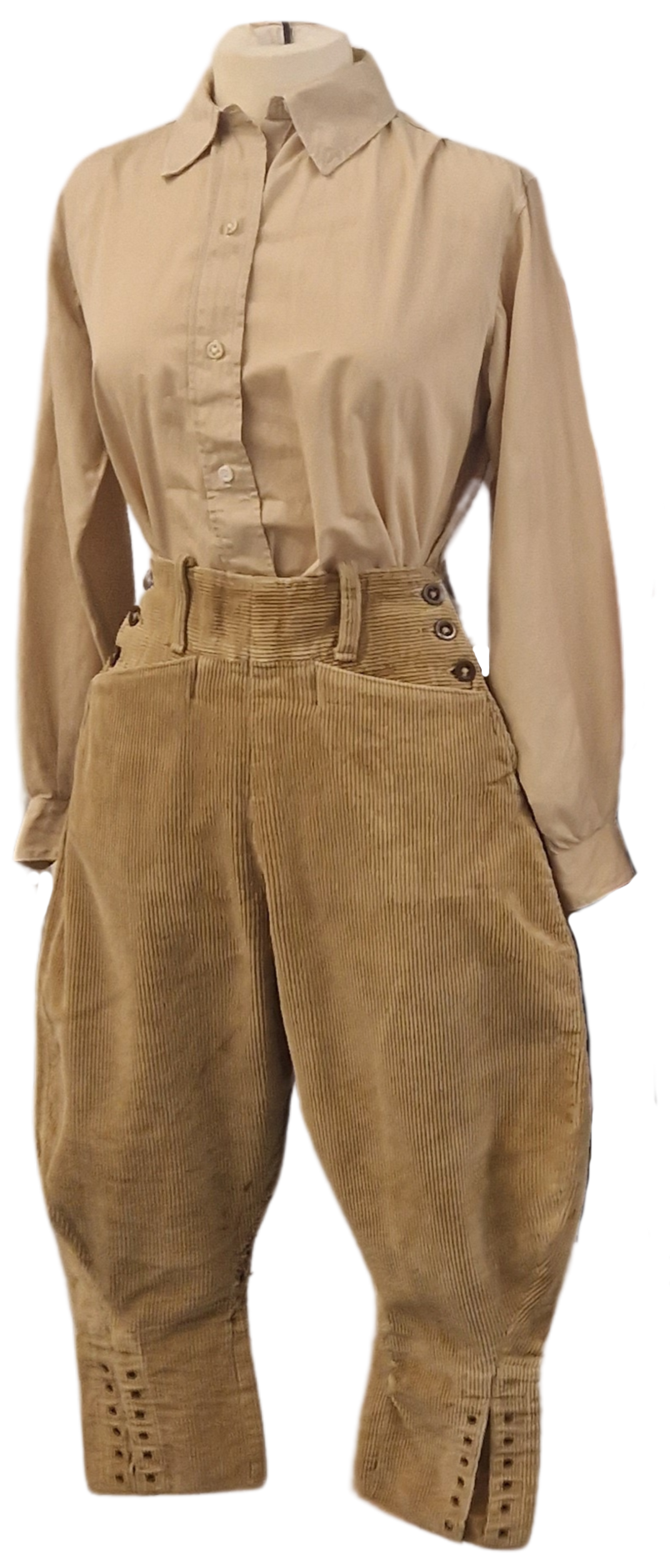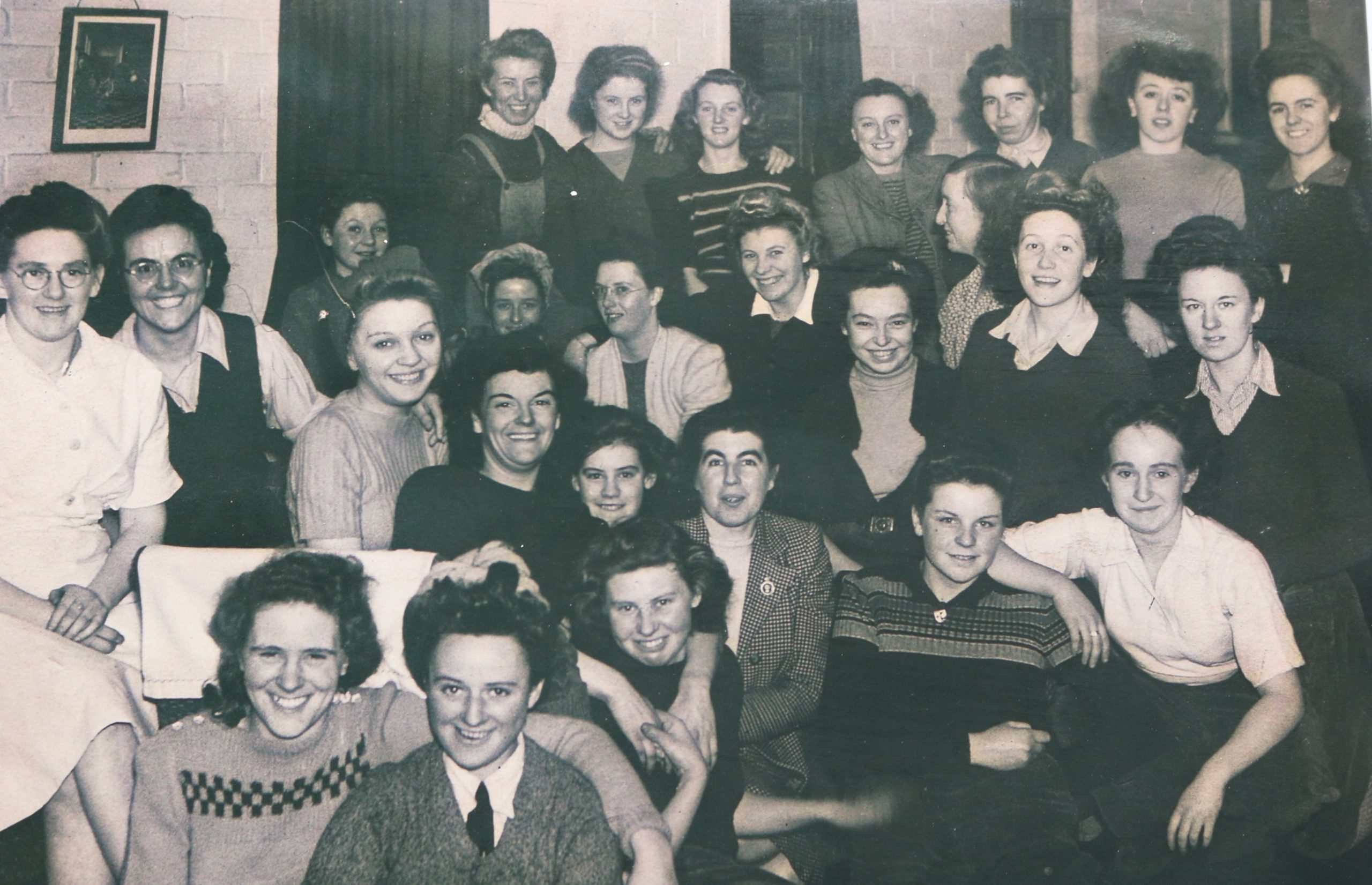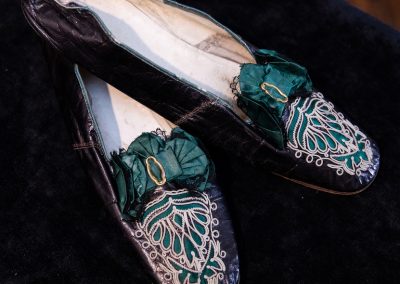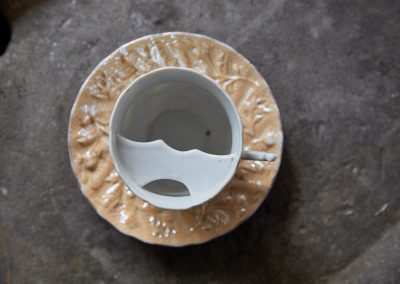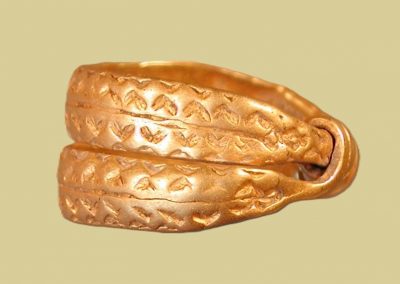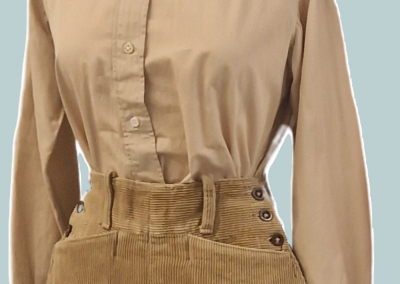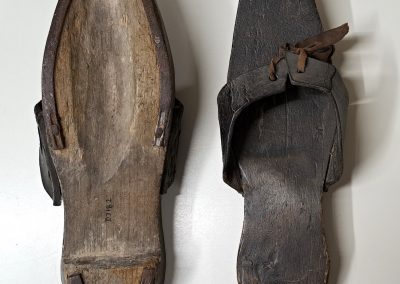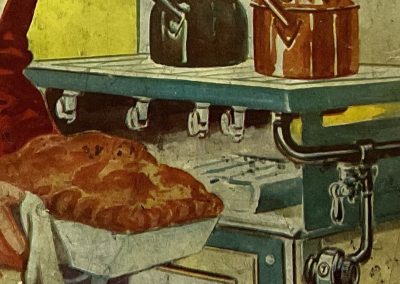Women’s Land Army Uniform
Craven Museum & Gallery, Skipton
On farms, ‘Land girls’ did a range of physical jobs at a time when farming was less mechanised than it is today, including ploughing, sowing, threshing and bailing. Some of the women worked in forestry roles and many worked in dairies.
The need for the Land Army and conscription
Women were originally called upon to volunteer in agricultural roles as demand increased for British-grown food during wartime. Food shortages were caused by difficulties with imports during the war and an increasing lack of male labour as more men joined the armed forces.
Similar problems during World War One had led to the formation of the Women’s Land Army, though it had been disbanded in peace time. However, by June 1939, it was formed once more and, by December 1941, women were actually being conscripted into it.
They were expected to work up to 50 hours a week and not all the women were paid adequately for their work.
A change in women’s clothing
Highly practical and with the design based on men’s clothing, the Land Army uniform was often viewed as one of the least glamourous for women involved in the ‘war effort’.
For many women, it would have been the first time they had worn trousers and they must have felt additionally self conscious as the corduroy was said to have made a whistling sound as they walked.
Some women complained that the shirts were particularly itchy whilst others tried to add a touch of femininity to their appearance by wearing bright headscarves.
This photo from Craven Museum’s archive shows the Land Army women at the Shortbank Road hostel in Skipton, captured in a moment of relaxation. Many of the women had fond memories of this time of their lives and formed close friendships, despite the very hard work.
Watch the Video to explore the women’s land army uniform further
Watch The Video With Subtitles
Exploring the outfit
Do you think the outfit would be have been comfortable to wear?
Why do you think the tear in the trousers was sewn up with the wrong colour thread?
Would you mind if your trousers made a whistling noise as you walked? Do you have any clothing that makes you feel self-conscious?
Explore clothing, identity and gender
Does it surprise you that many women joining the Women’s Land Army had never worn trousers before? Do you think they’d have welcomed the chance to wear them?
Do you think your clothing gives people clues about your personality? Are we right to connect clothing with our identity?
Do you think you might be put off a career if you didn’t like the uniform?
This uniform for women was based on the traditional clothing worn by men. Do you think it should be classed as gender-neutral design, or something else? Do you think uniforms should be gender neutral in their design? What adaptations have been made to make this more suitable for women?
Discussing conscription
Were you surprised that women were conscripted into these roles? How do you think people would respond to conscription today?

Breeches: short trousers fastened below the knee
Utilitarian: designed to be practical rather than attractive
Conscription: compulsory or forced enlistment in a role in order to serve the state. This is normally associated with joining the armed forces, but women were also conscripted or forced into a range of roles on the Home Front.
Gender-neutral design: design features that are not associated with either men or women
In the Classroom
Hotseat
Interview a member of the class in role as a new recruit to the Women’s Land Army. How do they feel having just received their new uniform?
Next interview a farmer who has got members of the Women’s Land Army helping on his farm. How does he feel about this?
Hold a Debate
From time to time, some politicians suggest reintroducing forms of conscription. This happened most recently in May 2024, when the Prime Minister at the time, Rishi Sunak, pledged to introduce National Service if re-elected to government. What do your students think about this topic?
Introduce the debate motion: Conscription is good for young people who should be made to do compulsory National Service.
You can read tips for creating formal debates. Debates don’t necessarily need time to be prepared – sometimes the discussion can take place as a form of thinking aloud and students can be free to change their opinions during the course of conversation.

Hands on History
You can take part in a workshop at Craven Museum & Gallery in Skipton to discover what life was like on the Home Front during World War Two.
Museum Location
Discover more objects connected with body image & gender

